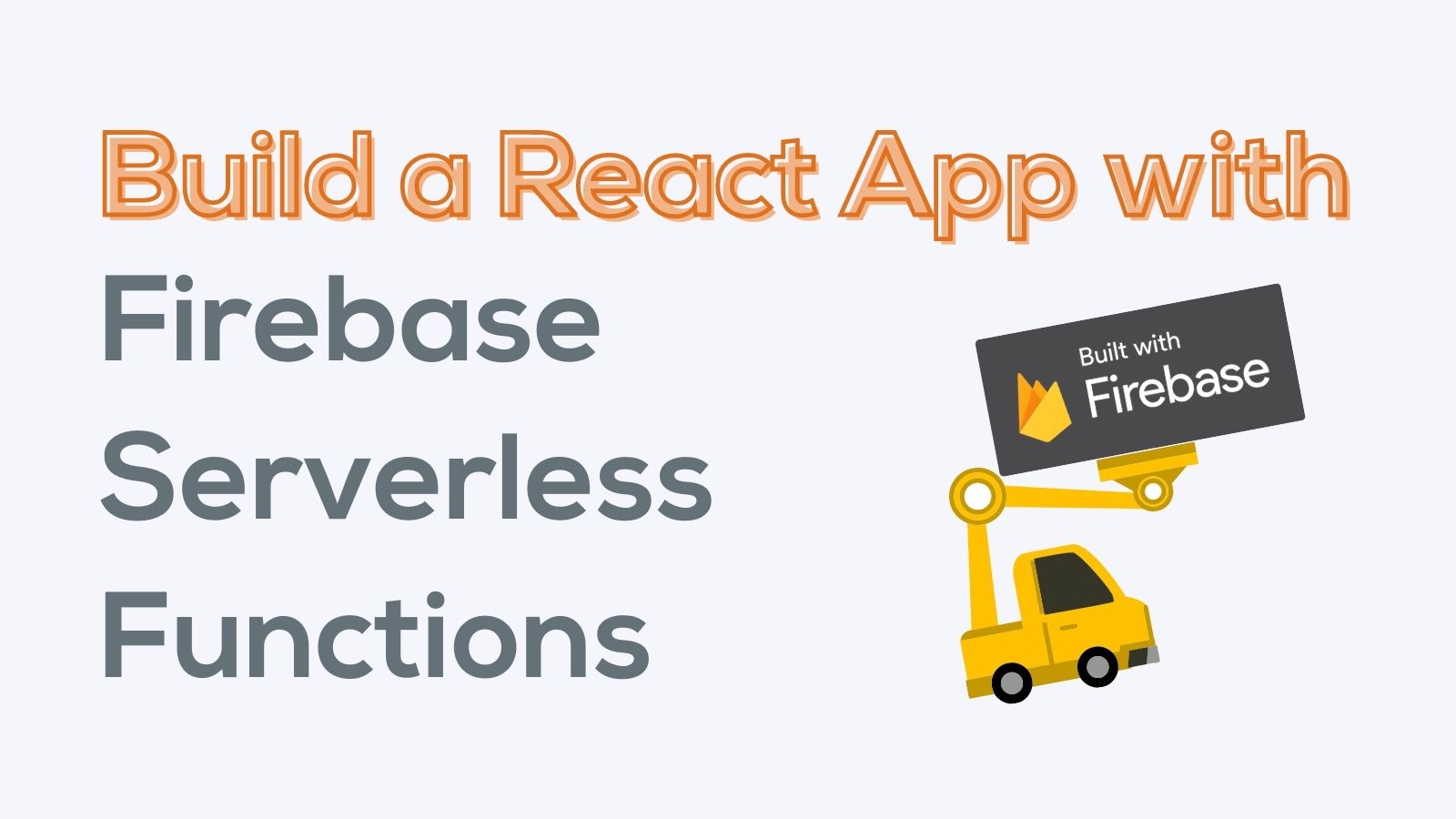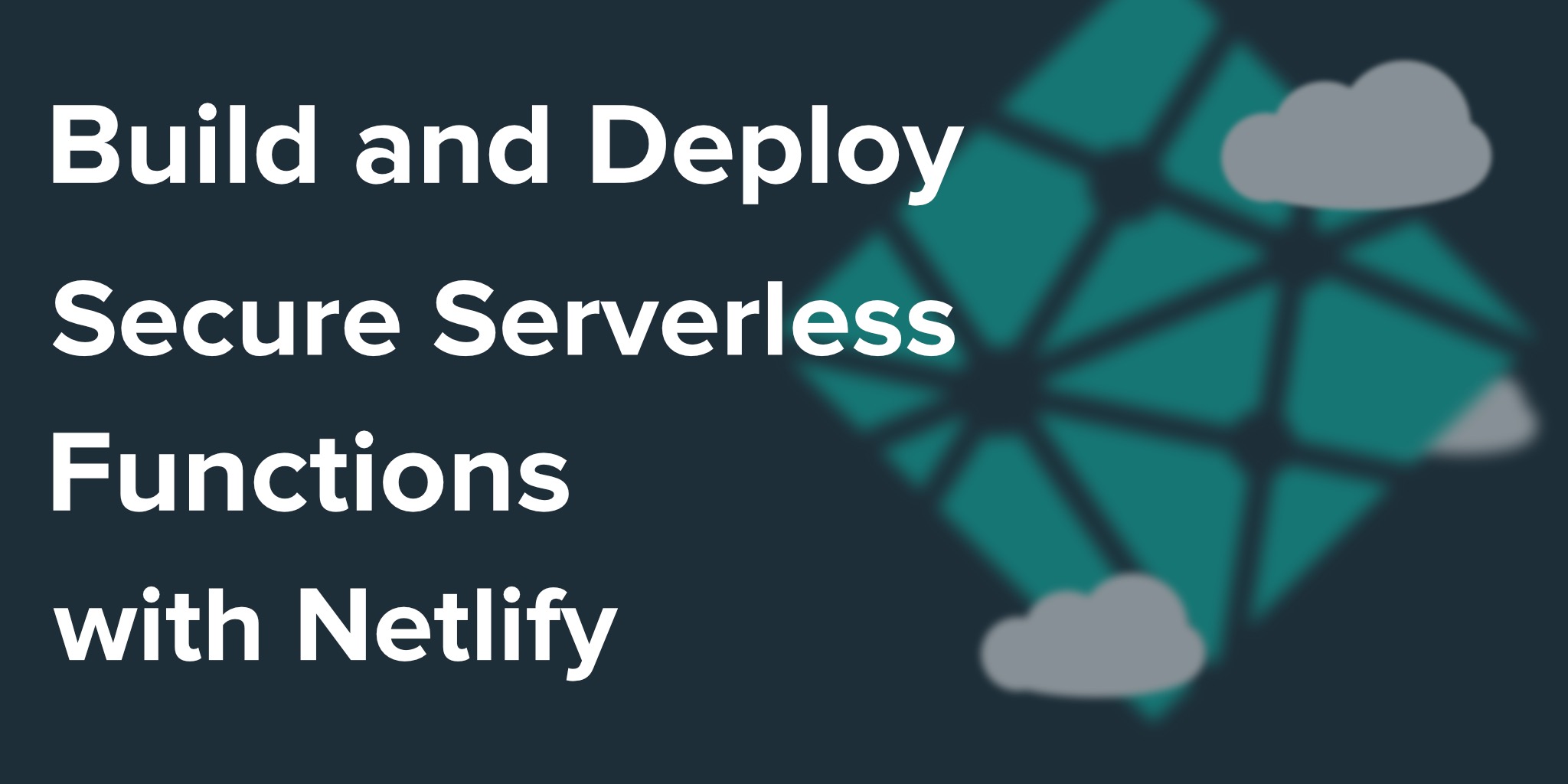Articles tagged serverless
Build a React App with Firebase Serverless Functions

Firebase is an exciting cloud platform from Google available to businesses today. Firebase connects everything from simple static websites to IoT devices to AI and machine learning platforms. The platform provides various services to facilitate these connections, like storage and authentication. In this tutorial, you will learn about two core Firebase products: Cloud Functions for Firebase and Firebase Hosting. Hosting is for deploying static web applications. Functions are the Firebase serverless platform. You will create...
How to Build and Deploy a Serverless React App on Azure

Microsoft’s Azure platform has as many high-tech products as anyone could ever want, including the Azure Static Web Apps service. As the name suggests, the platform hosts static web apps that don’t require a back end. Azure supports React, Angular, Vue, Gatsby, and many more, out of the box. However, you may run into situations where you want some back-end support, such as when you need the backend to run one or two API calls....
How to Write a Secure Python Serverless App on AWS Lambda

Modern authentication systems generate JSON Web Tokens (JWT). While there are several types of JWTs, we’re concentrating on access tokens. When a user successfully logs in to an application, a JWT is generated. The token is then passed in all requests to the backend. The backend can then validate the token and reject all requests with invalid or missing tokens. Today, we are going to build a simple web application that uses the Okta authentication...
Build and Deploy Secure Serverless Functions with Netlify

Serverless computing, sometimes referred to as “functions as a service” (FaaS), is an on-demand approach to providing backend application services. The serverless architecture is an excellent solution for many use cases where an application needs backend services occasionally, periodically (e.g., once a day), or dynamically scaled to meet demand. In this tutorial, you will learn to build serverless functions with the JavaScript language, deploy them to Netlify, and secure them using Okta. Netlify is a...
How to Authenticate an AWS Lambda Function in C#

Serverless was only first coined as a concept 8 years ago in 2012 by Ken Fromm in The future of the world is serverless. Even with the rise of cloud computing, the world still revolves around servers. That won’t last, though. Cloud apps are moving into a serverless world, and that will bring big implications for the creation and distribution of software and applications. If you come from traditional service architecture roots of on-premises or...
Serverless Java with Amazon Web Services

Serverless is the next iteration in cloud management. First, we let go of having physical hardware servers and moved all of our servers into the cloud because, hey, why bother managing all that hardware? This created cloud infrastructure providers that resulted in behemoths like Amazon and Google. Now, they’re saying, why bother managing a server at all? What you really want to do is run code, right? Serverless is an architecture where code is run...
How to Build a Secure AWS Lambda API with Node.js and React

Serverless architecture with AWS Lambdas is quickly becoming a popular option for companies looking to deploy applications without the overhead of maintaining servers. AWS Lambda functions are event-driven and serverless—triggered to process a piece of code and return a result. AWS Lambdas can be written in most common languages today on a variety of platforms including .NET Core, Java, Go and, in the case of this post, Node.js. The example in this post uses Node.js...
5 Minute Serverless Functions in Azure without an IDE

Microsoft Azure makes it incredibly easy to get a basic API/microservice up and running quickly! If you are unfamiliar with building serverless architecture in the Microsoft ecosystem, using Azure Functions has become a quick way to get back-end code up and running that is easy to understand and usable for anyone. In this tutorial, we will set-up an API endpoint using the HTTP Trigger invocation that you can use with any front-end site. I use...
Deploy Your Secure Vue.js App to AWS
Writing a Vue app is intuitive, straightforward, and fast. With low barriers to entry, a component-based approach, and built-in features like hot reloading and webpack, Vue allows you to focus on developing your application rather than worrying about your dev environment and build processes. But, what happens when you are ready to deploy your app into production? The choices can be endless and sometimes unintuitive. As an AWS Certified Solutions Architect, I am frequently asked...
Spread Serverless Holiday Cheer with Lambda and API Gateway
It’s that time of year again: Christmas music on the radio, festive decorations in the workplace, and a chill in the air. Except in the Southern Hemisphere, where it’s warm and balmy. And on the International Space Station, where the temperature is strictly regulated. But I digress. It’s a season for reconnecting with loved ones, exchanging gifts, and eating delicious food. And, if you’re like me, a little downtime to work on fun projects. Looking...
Why Are Webhooks Better Than Serverless Extensibility?
When you’ve built a successful software-as-a-service product, you tend to run into interesting technical (and business) questions. My favorite question is: “How do we add more functionality to our platform faster?” It’s an interesting question because everyone wants to build features faster. In a perfect world, you’d be able to hire 100,000 engineers, split them into teams of four (with no managers!), and have each team own a feature: spec it out, build it, iterate...